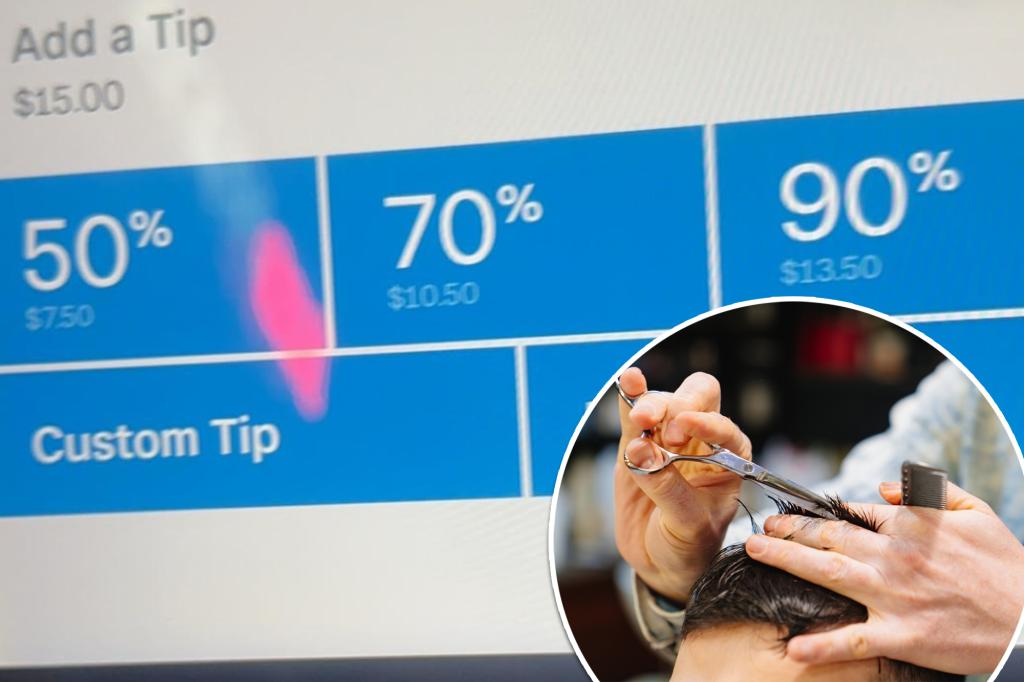A recent incident involving a man who was prompted to select high tip options while paying for a haircut sparked outrage on social media after he shared a screenshot of the tablet displaying the options. The choices included 50%, 70%, and even 90% of the $15 haircut bill, leading many to label the options as “unreasonable” and “shameful.” Despite the outrage, the customer did not reveal which option he chose, but many Reddit users expressed their discontent and vowed never to return to such establishments.
The concept of gratuitous gratuities and pressure to leave extra money has become a common complaint among consumers, with some referring to it as “guilt tipping.” Customers are increasingly feeling pressured to leave higher tip amounts at various establishments, including pizzerias, coffee shops, and fast-food joints with minimal customer service. Some patrons have expressed frustration at having high tip amounts suggested on the bill, especially when the service provided does not warrant it. This trend has led to a shift in consumer behavior, as many are starting to question the appropriateness of these suggested tip amounts.
The incident involving the man prompted discussions about the tipping culture and whether it has gotten out of control. A June survey by Bankrate revealed that 32% of Americans were annoyed by pre-entered tip screens, while 30% believed that the tipping culture has become excessive. Many consumers, like Jared Goodman, have found themselves in situations where they were asked to leave disproportionately high tips for their purchases, leading them to question the rationale behind such requests. As a result, there is a growing sentiment among consumers to reevaluate the practice of tipping and the expectations placed on customers.
Despite the backlash against gratuitous gratuities and pressure to leave high tips, some consumers have highlighted the need for transparency and fairness in tipping practices. While many are in agreement that excessive tipping is unfair, there is also recognition that tipping plays an important role in the service industry. However, there is a call for more reasonable and realistic tip amounts to be suggested to customers, especially in cases where the service provided does not justify high gratuities. As tipping practices continue to evolve, it is essential for businesses to listen to consumer feedback and adjust their practices accordingly to ensure customer satisfaction and loyalty.
In response to the incident, many consumers have vowed to be more vigilant about tip amounts suggested on their bills and to push back against pressure to leave unreasonably high tips. Some are calling for greater transparency in tipping practices and for businesses to provide clearer guidelines on appropriate tip amounts based on the service received. As the debate around gratuitous gratuities continues, it is clear that consumers are becoming increasingly vocal about their frustrations and expectations when it comes to tipping, signaling a potential shift in tipping practices in the service industry. Ultimately, the incident has shed light on the need for businesses to reevaluate their tipping policies and ensure that they align with customer expectations and standards of fairness.


